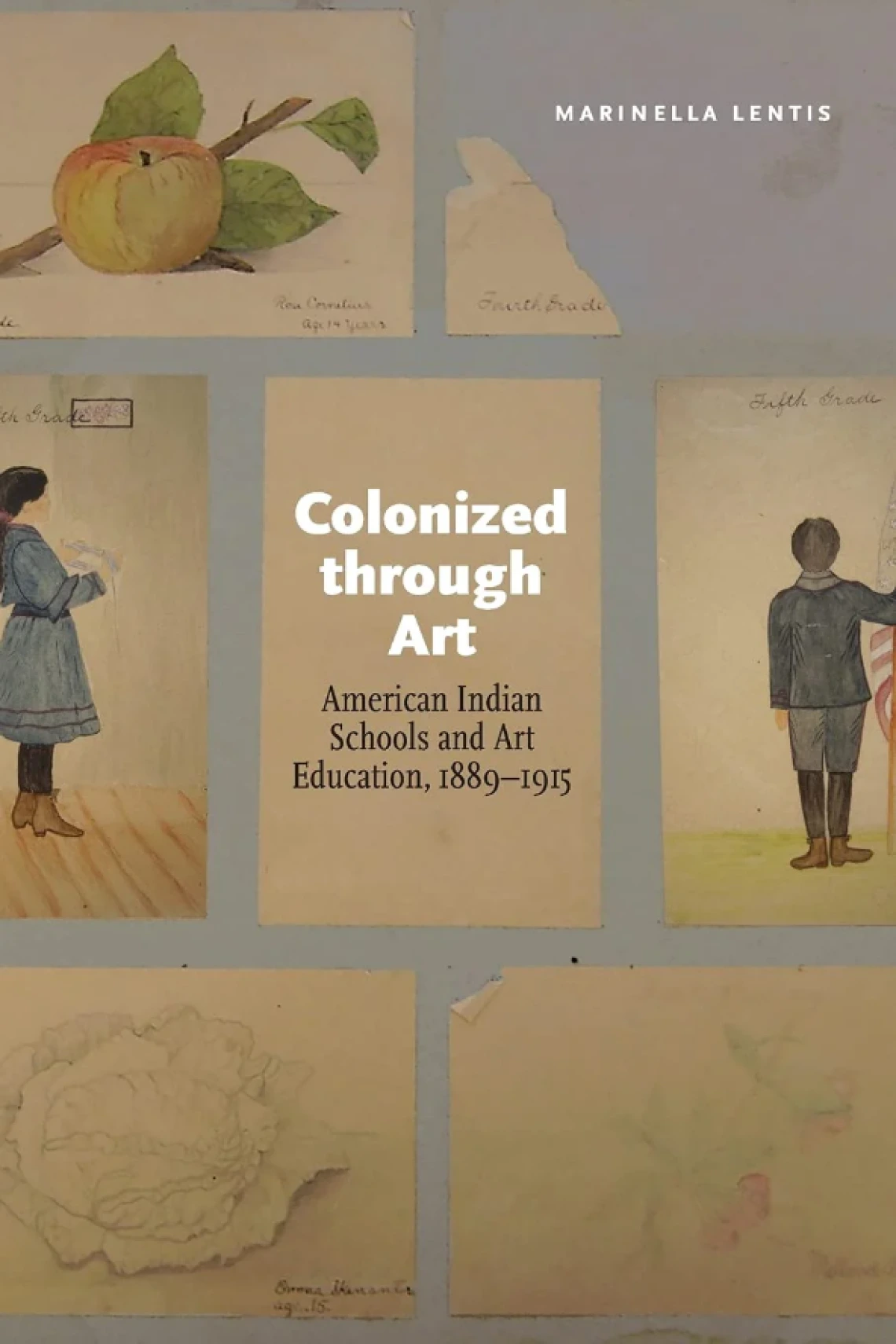
Colonized through Art: American Indian Schools and Art Education, 1889-1915 (August 2017) by Marinella Lentis.
From the Introduction
Every child enjoys drawing with colored pencils, crayons, and markers and putting on paper his ideas about the world around him. Similarly, children love to touch and feel things with their own hands, give shape to something out of nothing, to build, to invent. Her mind directs her hand into spontaneous compositions that sooner or later are going to reflect the environment in which she grows and through which she learns about reality. But when such natural and imaginative instincts are forcibly rectified and redirected toward what someone outside of the child’s circle deems more correct—the right imageries, the right shapes, the more appropriate color and usage—something is inevitably lost. In the child’s mind, a door that was once open to uncountable possibilities of exploration, experience, and knowledge is now all of a sudden closed, although not permanently locked. This unnatural imposition no longer allows the young person to grow and develop to his or her full potential, because the pleasurable creative act has now become an oppressive instrument for reshaping the world according to a different set of foreign and unfamiliar standards that do not value the individual’s own imagination, background, and heritage. This is the art training American Indian children received in government schools at the turn of the twentieth century. The purpose and content of that kind of training are the subjects of this book.

